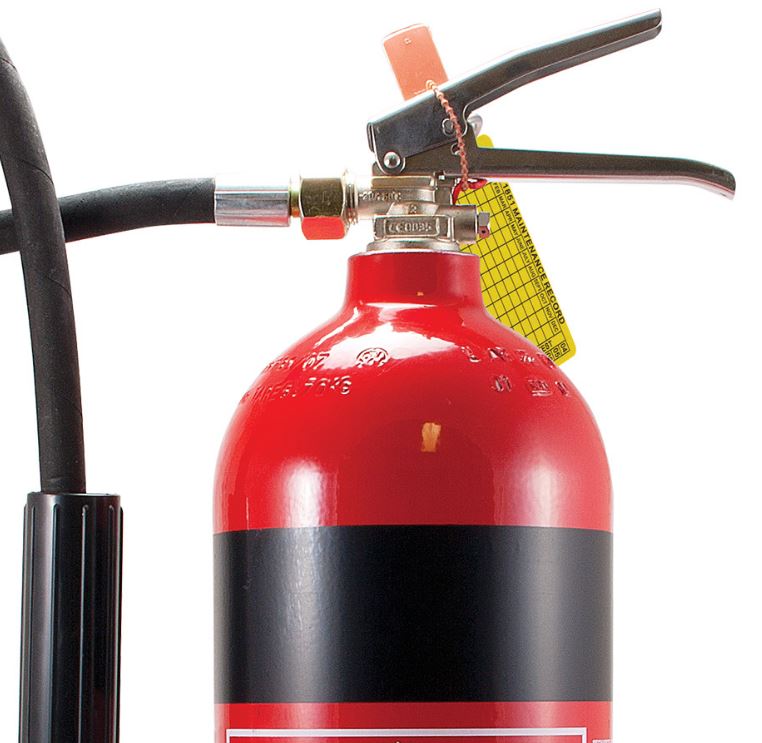Generally Fighting an Electricity based fire; choose a CO2 Fire Extinguisher
Electrical Fire Extinguisher: Which is best?
Fighting a fire in the modern world its quite common that it would involve Electricity. The rise in the popularity to have a fire extinguisher that can be used for electricity fires is because of electronics becoming essential to businesses.
Prior to modern technological advancements, fire risks commonly involved paper fires and smoking or burning cigarette butts, causing the majority of office fires. With the social perspective changing on smoking and lower paper usage, in general workplaces have seen the Water Fire Extinguisher become less popular.
The risk of an Electricity Fire and needing to be extinguished has increased with more technology. Electricity Fires need to be extinguished with the right Fire Extinguisher. Using a Water Extinguisher to fight an Electrical Fire has multiple risks and is very hazardous to the Fire Extinguisher user.
Which Extinguishers are best for an Electricity Fire?
The number one choice for an Electricity Fire is the CO2 Fire Extinguisher. This Extinguisher is safe on both low and high voltage. Identifying this Extinguisher quickly, the user can look for a Black Band at the top of the Fire Extinguisher.
Positives – No clean up mess and limited damage to Electronics
Negatives – Has limited uses to other Fire Classes
Second choice is the all-rounder ABE Fire Extinguisher. Safe on common Electrical Fires up to 1000volts, which electricity in Australian Businesses range between 220volts to 240volts. Identifying this Extinguisher quickly, the user can look for a White Band at the top of the Fire Extinguisher.
Positives – The ability to put out Class A, B, C, D, Electrical Fires
Negatives – Hard to clean up, smell and damages electronic equipment in a corrosive manner
Selecting the size to fight an Electricity Fire
This part will normally involve an expert Fire Extinguishers Certifier like FCF to assess the fire risk, compartment size, AS2444 and the manufactures equipment ability.
There is no easy, one formula fits all. Generally the bigger the risk, the more firefighting equipment needed to extinguish the fire risk. Also equipment value can come into the equation, for example;
- A $500k cancer scanning equipment would need dedicated CO2 Fire Extinguishers
The faster a fire can be extinguished the less damage to electrical equipment. Saving the business money in repairs.
Always ensure you have Fire Extinguisher Training before attempting to fight a fire. On average a fire doubles every 30 seconds. This leaves vital seconds to make decisions and take actions. If in doubt, take the exit to safety. To learn more about Fire Extinguisher Training for as little as $10 or less per course, visit firetrainingonline.fcfnational.com.au
Contact FCF today to find out the best solution for fighting an Electricity Fire.
In addition to choosing the right type of fire extinguisher for an electrical fire, it’s also important to ensure that the extinguisher is installed in the appropriate location and that it is easily accessible in case of an emergency. Electrical fires can occur anywhere in a building where there is electricity, so it’s important to have fire extinguishers located in all areas where electrical equipment is used or stored.
When it comes to maintaining electrical fire extinguishers, it’s crucial to schedule regular inspections and maintenance to ensure that the extinguishers are in good working condition. This includes checking the pressure, ensuring that the nozzle is clear, and making sure that the extinguisher is not damaged or leaking. It’s also important to train employees on how to use the extinguisher properly and safely, and to have a plan in place for evacuating the building in case of a fire that cannot be controlled with a fire extinguisher.
Finally, it’s important to note that while having the right type of fire extinguisher is important in fighting electrical fires, prevention is always the best strategy. This means ensuring that all electrical equipment is properly installed and maintained, that cords and wires are not damaged or frayed, and that employees are trained on safe practices for using electrical equipment. By taking proactive measures to prevent electrical fires, businesses can reduce the risk of a fire occurring in the first place and minimize the potential for damage or injury.



